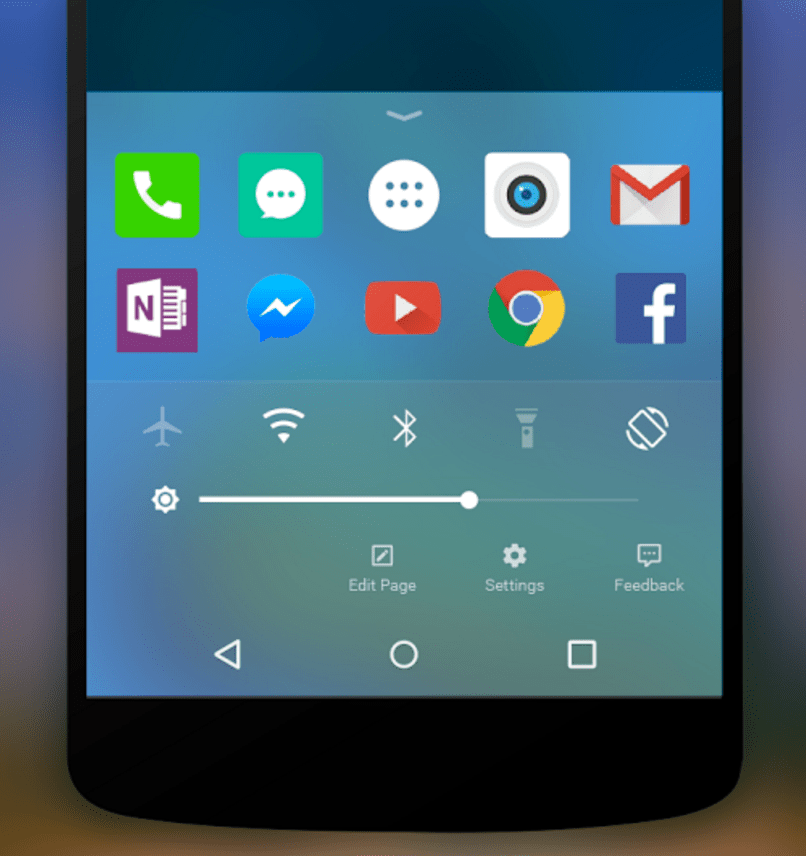There are a number of ways to customize an Android smartphone, but one of the more unexpected tools to emerge earlier this year was Arrow, an Android launcher application designed by Microsoft. This summer, an unfinished version of the launcher was discovered by way of a Google+ group for beta testers. But, today, the app has gone live on the Google Play store for all to try.
While it may seem surprising to see Microsoft building a tool that lets you customize the way you use your Android smartphone, it’s reflective of the company’s new strategy to embrace cross-platform development instead of trying to lock everyone into Microsoft’s own software and services. You can see this with the release of its flagship Office application for competing platforms like iOS and Android, for example, as well as with its virtual assistant app Cortana.
With Arrow, however, the idea is to offer a different interface for Android that makes it easier and quicker to access your most frequently used apps, as well as message friends, take notes, or access your favorite apps and settings.
The launcher has a bit of an iOS 9 feel, at times, though without being a direct clone of the iOS interface.
It somewhat mimics Apple’s recent Spotlight search update which now offers suggested apps and contacts when you swipe right on the iOS homescreen. While Apple’s “Siri Suggestions” are based on more than recency – iOS also considers how you use your phone or what apps you launch at different times of day – Arrow’s “Recent” screen offers a similar ability to access apps, files, photos, or contacts you need quickly. That is, things you want to get to having to swipe through screens or dig around in apps.
In addition, Arrow organizes your applications based on your usage, which means that those you launch the most will appear at the top of the list.
You can also customize a dock that you swipe up from the bottom of the screen to access – yes, a lot like iOS’s Control Center, right down to the semi-transparent interface. Here, you can access favorite apps or commonly-used settings, like airplane mode, Wi-Fi, Bluetooth, a flashlight and more – Settings you would find in Control Center, too.
Another feature lets you quickly find people, then message, email, or call them with a swipe, while another lets you create notes and reminders.
Similar to some other Android launchers, you can use Arrow to re-arrange pages, set pages as your homescreen, organize and use widgets, theme your icons, and more. The only notable Microsoft integration (for now, at least) is the addition of wallpapers from Bing.
While some of Arrow’s interface is reminiscent of iOS, the larger strategy here could be more similar to Yahoo’s Aviate – an Android launcher Yahoo bought to get it a position in the mobile ecosystem where it doesn’t have its own platform, only software applications. Microsoft is in a similar boat. Though it does have Windows Phone, that OS and related devices only represents a tiny percentage of the overall smartphone market. That’s why Microsoft has embraced cross-platform development, and why it’s experimenting with customizations like this with Arrow.
If Arrow established traction, Microsoft could take advantage of the app to push or recommend its own apps and services like Office, OneDrive, Outlook, Bing and more to end users.
To be clear, Arrow is a Microsoft Garage project for the time being. That’s the internal R&D group that rolls out experiments to see which may have staying power or be worthy of further development. It’s not even the first Android app to emerge from this idea tank – previous Garage efforts have included an Android lock screen called Next and an Android Wear search assistant Torque, for example.
Arrow, in fact, was built by the same team behind Next and is now available in English and Chinese. The app is a free download from Google Play.




































Comment